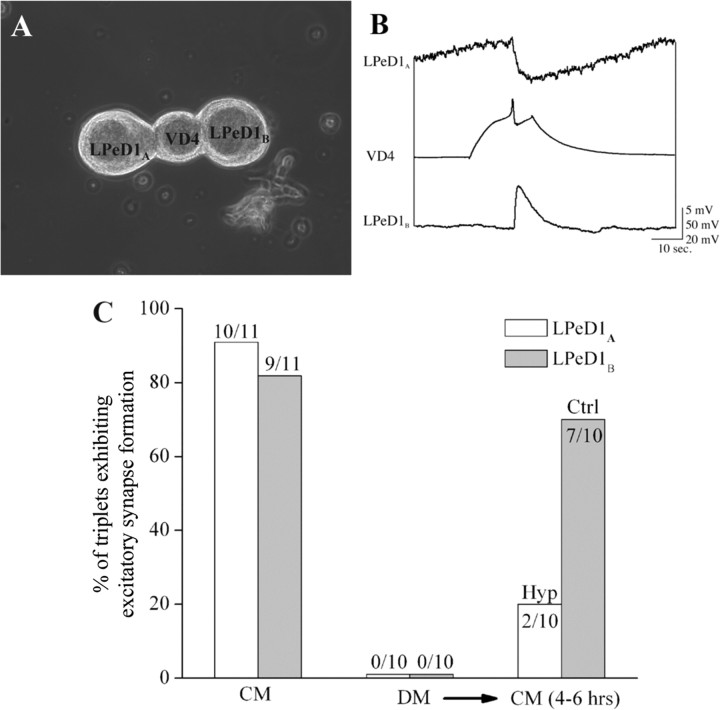Figure 7.
Blocking CM-induced electrical activity in the postsynaptic neurons LPeD1 prevented trophic factor-mediated excitatory synapse formation between the paired cells. To test whether preventing CM-induced activity and the underlying Ca2+ oscillations blocks excitatory synapse formation, cells were paired in a triplet configuration. Specifically, a single VD4 neuron was simultaneously paired with two LPeD1 cells (LPeD1A and LPeD1B) and cells were maintained overnight in DM. A, A phase contrast image depicting the triplet configuration where LPeD1A was injected with hyperpolarizing current during the CM exposure (4–6 h), whereas cell labeled LPeD1B was allowed to fire action potential in response to the trophic factors. While under normal conditions (no current injections), VD4 establishes excitatory synapses with both LPeD1 neurons, hyperpolarizing one cell to prevent CM-induced activity resulted in the formation of inhibitory synapse, whereas cell that was allowed to exhibit normal activity established excitatory synapses after the CM exposure. B, Induced action potentials in VD4 generated 1:1 inhibitory (LPeD1A)and excitatory (LPeD1B) postsynaptic potentials in hyperpolarized versus the control cells. C, Presents summary data showing the percentage of cells exhibiting excitatory and inhibitory synapses under different experimental conditions. Specifically, when cultured in CM overnight, >80% of both LPeD1 neurons could form excitatory synapses with presynaptic VD4 partner, while no excitatory synapses were observed between cells cultured in DM. After replacement of DM with CM, a majority (7 of 10) of control (Ctrl, LPeD1B) neurons established excitatory synapses, whereas cells hyperpolarized (Hyp, LPeD1A) throughout the experiments remained inhibitory (C).

